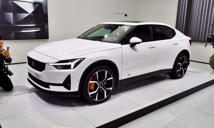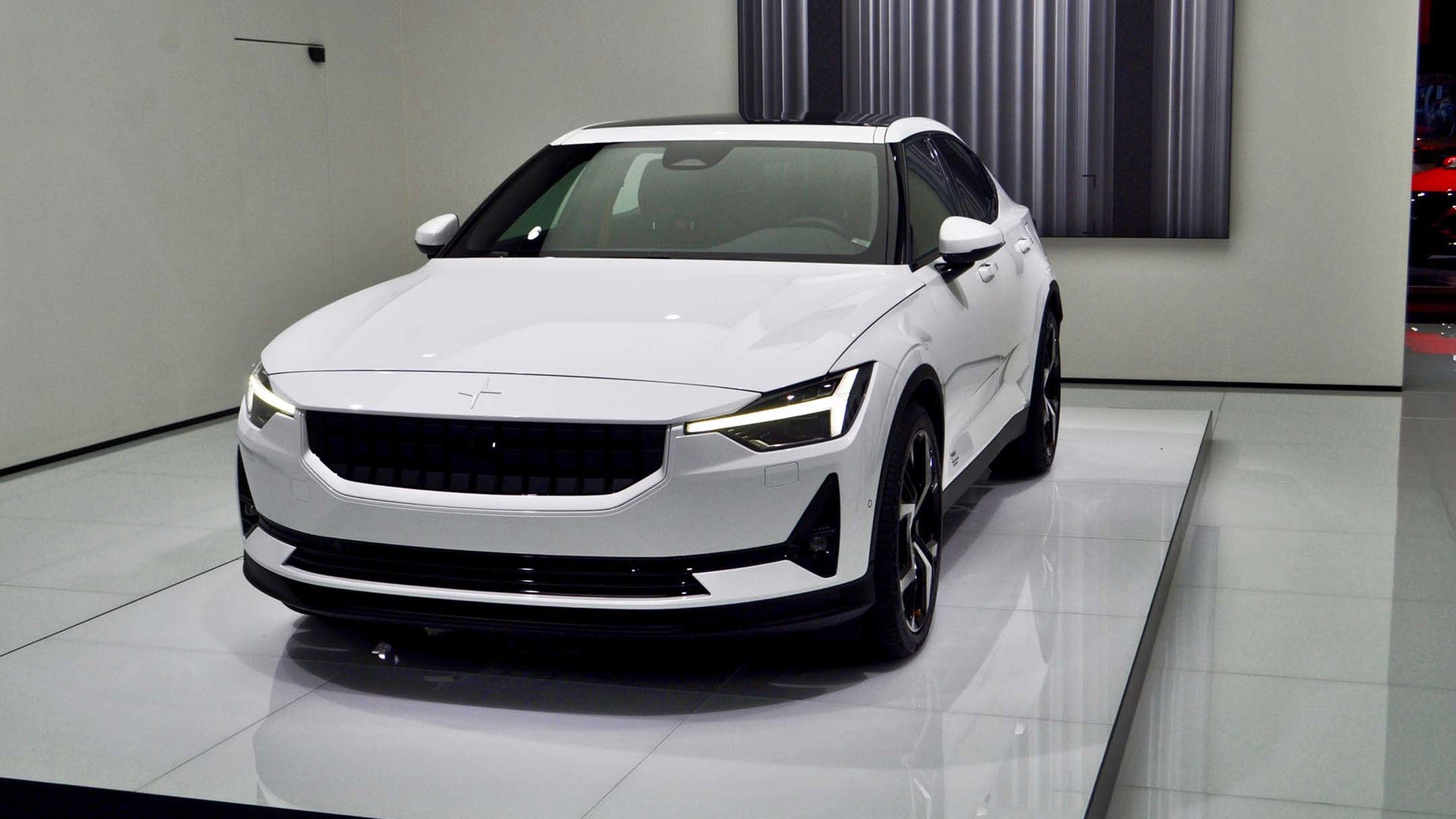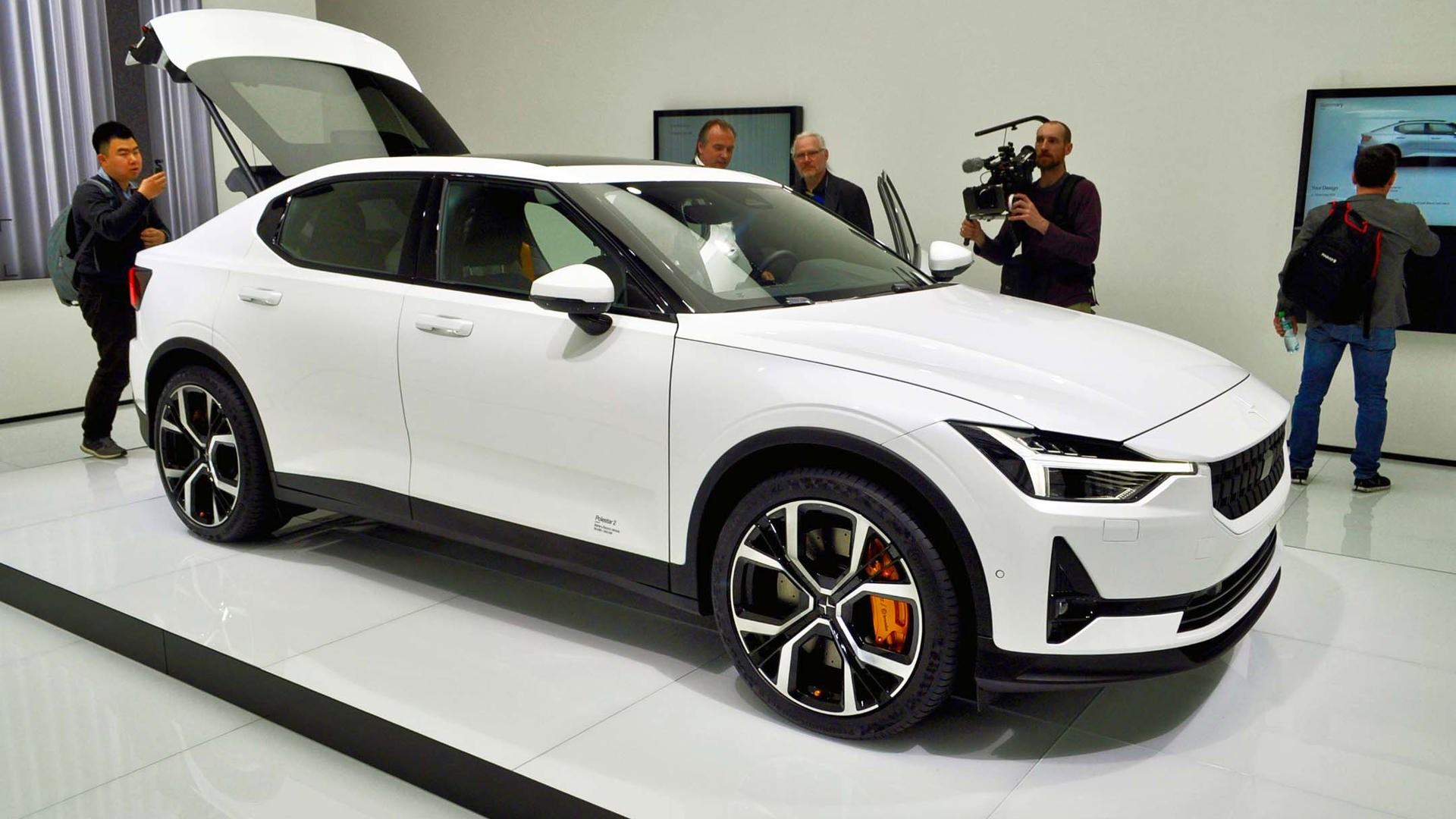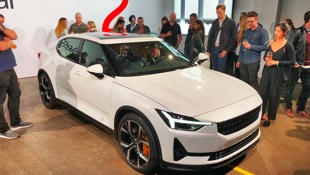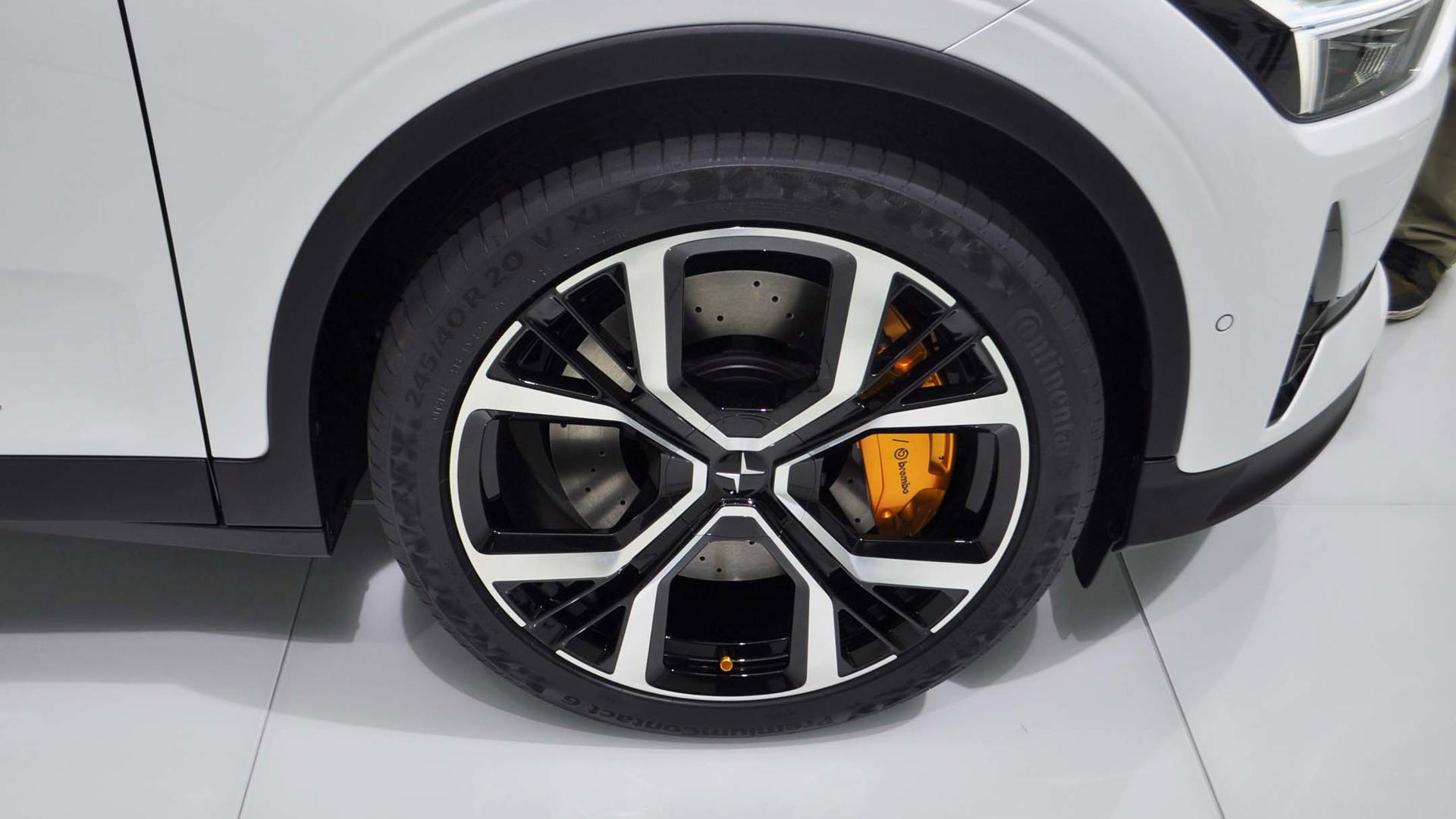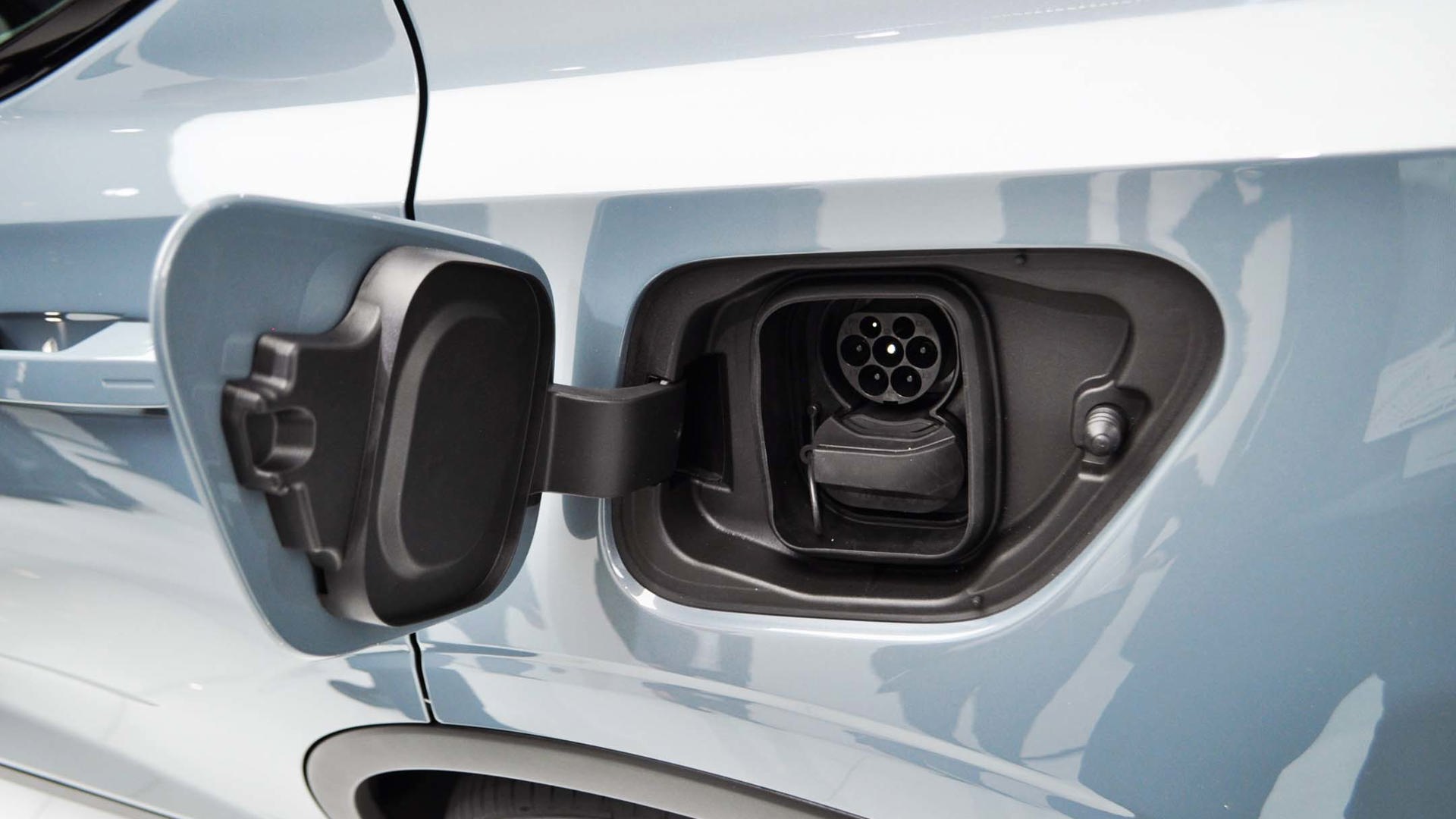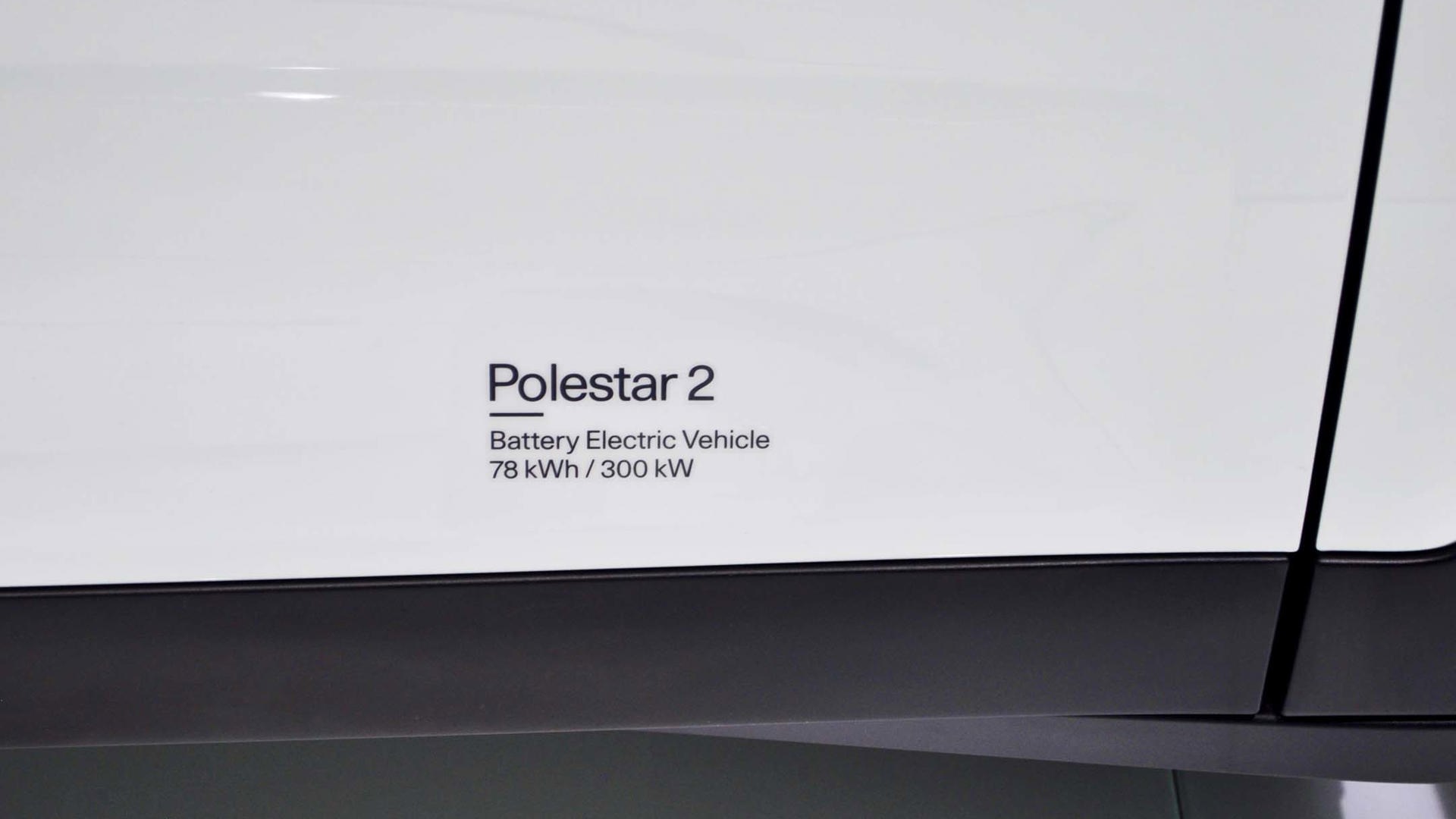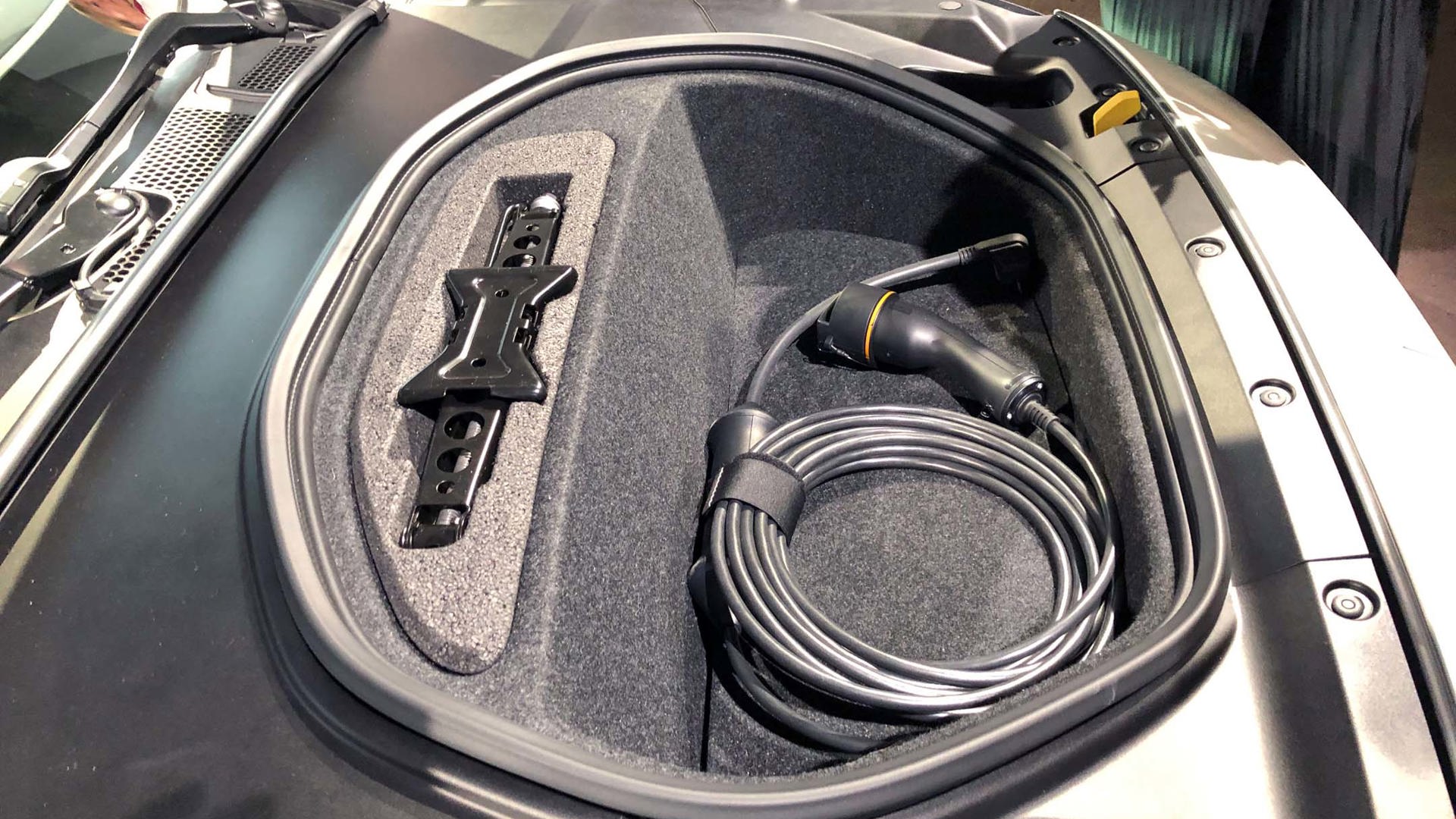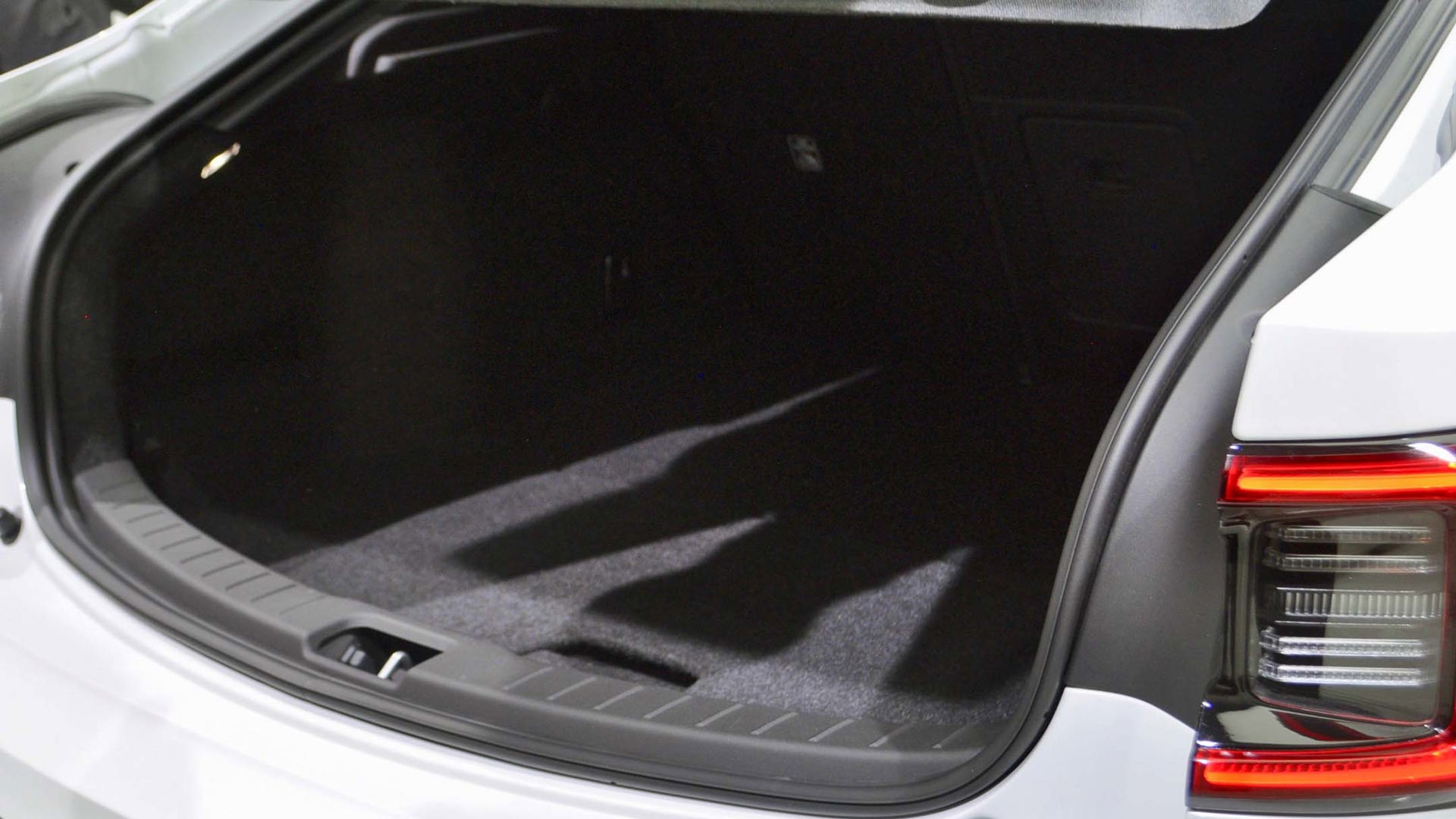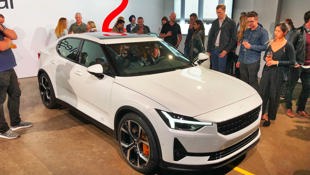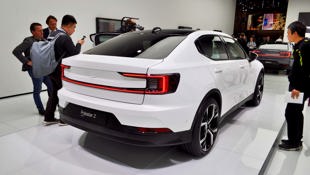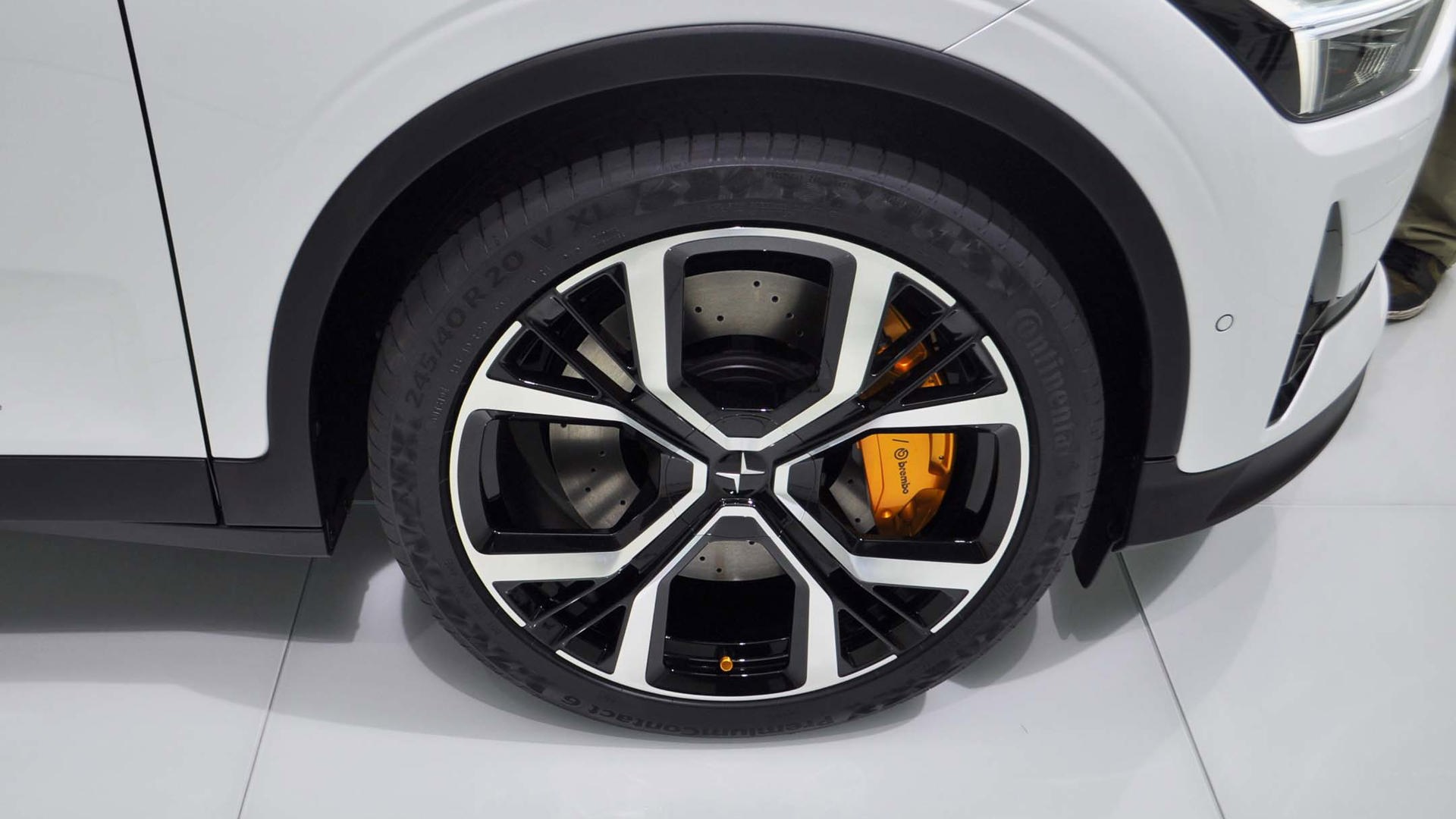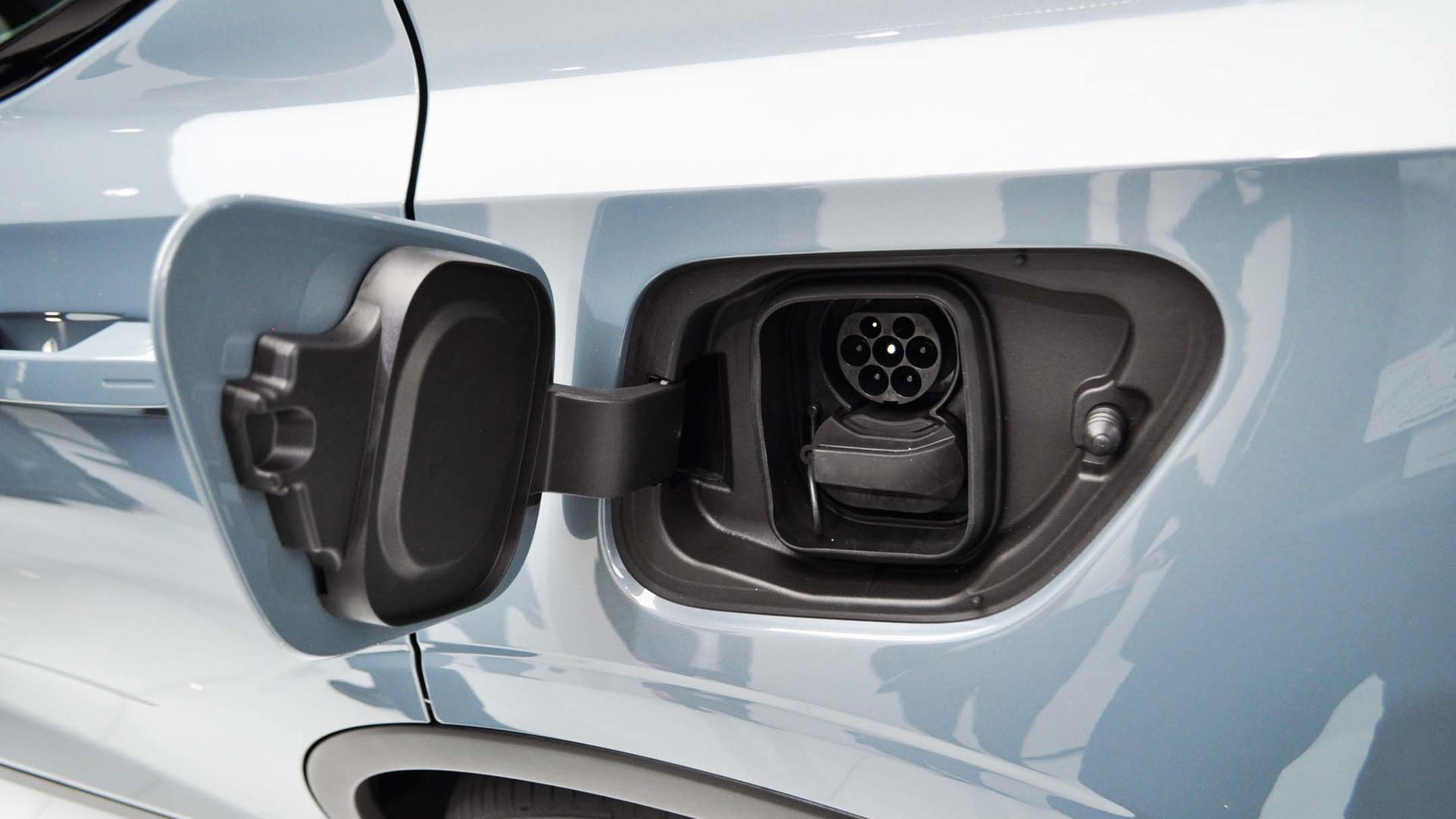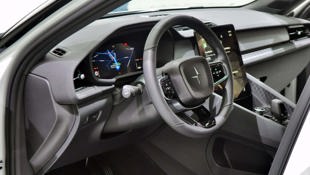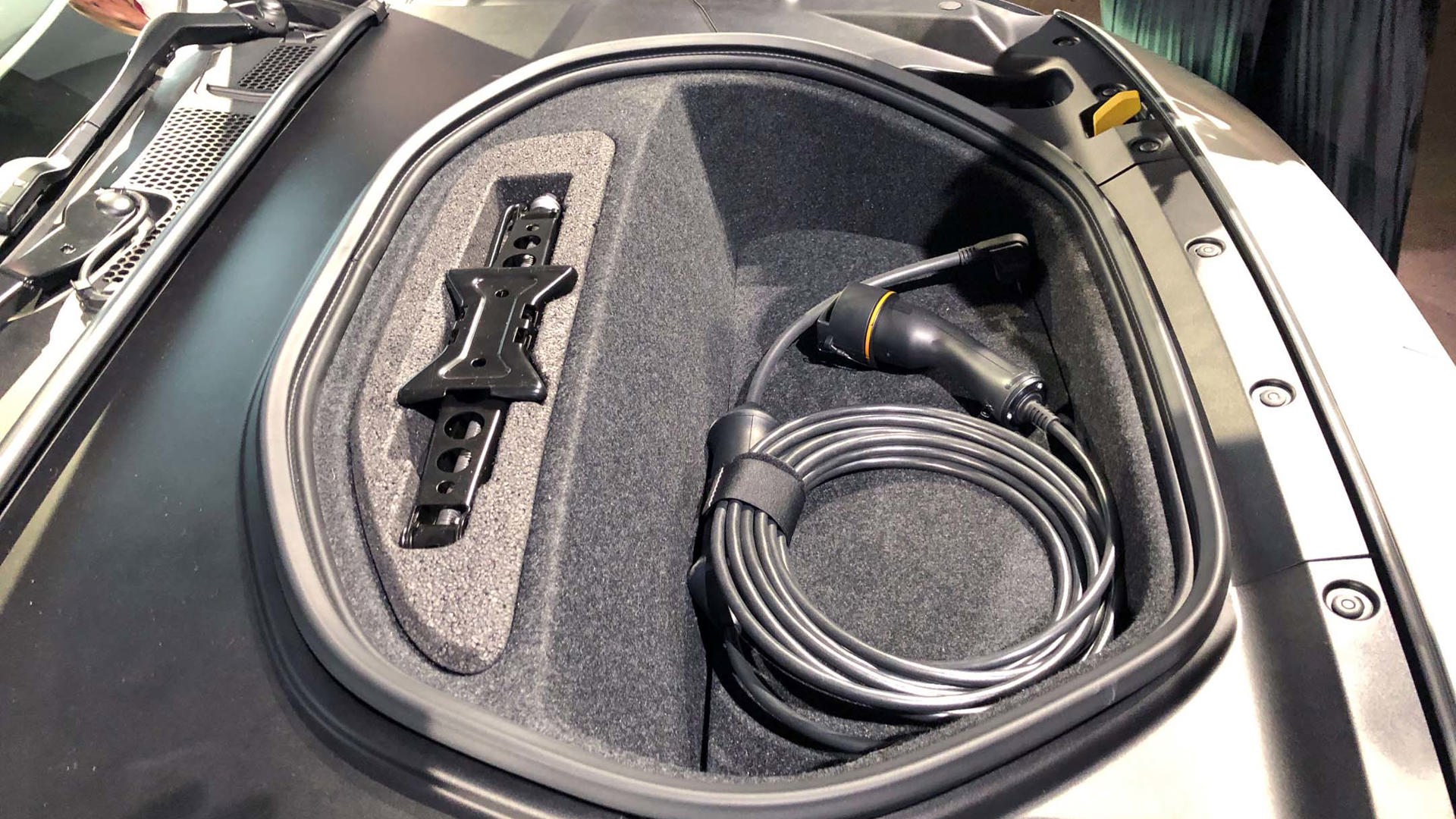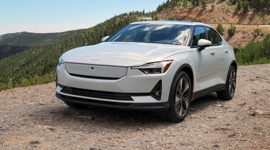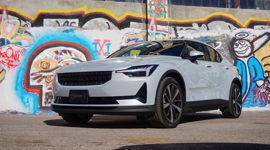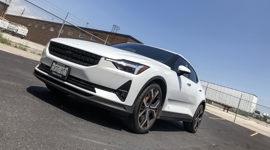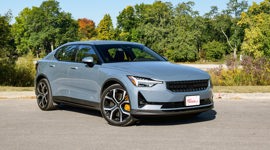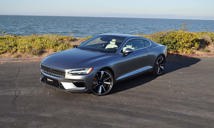With the Tesla Model 3 ringing up shockingly high Canadian sales for a $45K–$65K-ish luxury compact sedan – we’re talking in the ballpark of Honda Accord sales here so far in 2019, for a much pricier vehicle – there’s no doubt that other companies are busy at their digital drawing boards coming up with rivals for Tesla’s least expensive all-electric four-door. So which company will be the first to market with a high-performing battery-electric four-door to rival Tesla’s best-selling model? As perhaps few would guess, Polestar.
Wait, who?
That would be Polestar, Volvo’s new electric brand that’s co-owned 50/50 by the very Swedish Volvo and its Chinese parent company Geely, which has yet to deliver one vehicle to any customer as of this writing, in Canada or anywhere else in the world yet. Canada is one of nine launch countries for the brand, said Polestar CEO Jonathan Goodman at a recent launch event in Toronto for prospective owners and media folks. Canada is one of Polestar’s key target markets, with expectations that sales will be up there with countries like the UK, but a good tier below the expected top-selling markets of the US, China, and EV-loving Norway.
Goodman highlighted that not only will the Polestar 2 be different from most similarly sized and priced luxury vehicles due to its all-electric drivetrain, but it will also be marketed in a completely different way than other luxury cars in general, including Volvos.
“You will be able to do everything you want online – we will open a network of Polestar spaces, staffed entirely by non-commissioned sales people,” said Goodman, detailing how these Polestar “spaces” will be in luxury malls or upscale shopping areas, though Polestar executives concede that warranty work, service and back office duties will be handled by Volvo retailers. These “spaces” will be located in the country’s three largest cities of Toronto, Montreal and Vancouver at launch, but dealers will be able to deliver anywhere in the country.
“You’ll be met by someone who’s not there to put your name on the bottom of an order form, but are just there to explain the car to you, and make the whole retail experience fun again.”
Polestar 2 to launch top end spec first at $70K
The Polestar 2 will launch with its top-line model when it’s expected to arrive by July 2020, at $69,900 to start for fully loaded launch editions, a similar pricing and marketing strategy as the Model 3 launched with, though the Polestar 2 will debut with the highest performing edition of the 2 right from the start. This will mean it will come out of the gate with all-wheel drive as standard, with one electric motor at each axle, pushing out a total of 408 hp and a huge 487 lb-ft of torque, giving it roughly the horsepower of a BMW M3 sport sedan, and way more torque.
The Polestar 2 is expected to do the 0–100 km/h benchmark acceleration run from rest in roughly 4.7 seconds, which is about half a second slower than that hardcore BMW M3, and well behind the mid-three second times quoted by both Tesla and independent testers for the Model 3 Performance version. Of course, this is the expected time, so expect to see lots of owner and review tests when these 2s start showing up on the market by early summer, likely as 2020 models, but possibly as 2021s.
So how far will the Polestar 2 travel on one charge? Roughly 443 km, going by its official EPA estimate of 275 miles, courtesy of a large 78 kWh battery located under the floor. This allows for a second cargo area up front, which held the included trickle charger at this event, though the frunk here seems notably shallower than the one in the Model 3. But of course larger than the non-existent ones in most other vehicles, which Polestar executives estimate will be where the all-new start-up brand will pull the majority of its customers.
The Polestar will share its EV architecture and possibly its entire powertrain with the soon-to-debut Volvo XC40 EV, which will be Volvo’s first all-electric vehicle, after offering plug-in hybrid versions of much of the rest of its lineup. The XC40 is expected to offer a range of roughly 450 km as well, although industry whispers suggest that Volvo’s increased emphasis on safety will likely mean a lower top speed and less overall power than in the Polestar 2. For Volvo and EV fans alike, it’ll be interesting to sift through the technical differences once the XC40 EV is completely revealed in mid-October between it and its brother from another mother Polestar 2.
Polestar is calling the 2 a five-door fastback, though from the side, it’s difficult to tell that the rear glass raises up with the truncated trunk lid, similar to Tesla’s larger Model S. This hatchback design provides extra loading flexibility over the Model 3, while the flat-ish roofline helps provide good headroom for rear passengers.
Speaking of styling, while the Polestar 2 removes all exterior Volvo badging, and officials insist all body panels are unique from Volvo models, the Thor’s hammer headlights and overall silhouette provide a clear link to the Polestar 2’s Swedish roots, and corporate lineage. So much so that it’s almost a surprise to see the new Polestar logo adorned on the front nose and steering wheel of this car, as the vertically-oriented centre screen and all of the switchgear also provide a very Volvo-like ambiance inside as well.
Polestar coming sooner than Polestar 2
Despite the clear focus here on the 2, the new brand’s first vehicle to launch will be the Polestar 1, a limited volume plug-in hybrid 600 bhp sports luxury coupe set to arrive in late December or early January. The fact that it uses gasoline may tarnish it (and Polestar’s) environmental halo compared to Tesla’s electric-power-only lineup, but Polestar’s justifiably proud of the estimated 97 km worth of all-electric range this pricy two-door GT coupe, which looks set to be the longest AER of any plug-in hybrid on the market.
And with a relatively fuel-efficient 2.0-litre four-cylinder gas engine that’s both super- and turbocharged, like some of its top-line Volvo Polestar Engineered corporate cousins, its 373 hp gas engine combines with two rear electric motors to reach a 591 hp summit, while torque is a monster-truck-like 738 lb-ft. Yes, that’s roughly Mercedes-AMG turbo V12 territory, with the Polestar 1’s 500 car global production plan for its first year and 1,500 vehicles in total over a three-year run meaning the Polestar 1 will be priced solidly in six-figure exotic territory, at US$155,000.
Perhaps unusually, the deposit for the 1 has been set at a fairly reasonable C$2,500, especially considering that the $70k Polestar 2 can be ordered now with an online C$1,500 deposit.
Going back to that Polestar 2, it will offer at least one key feature not available (yet) on the Model 3: the ability to lease it. Tesla took a few years to offer on the pricier Model S and X SUV, but hasn’t yet started offering on its popular 3, though Polestar officials quietly concede both it and the planned all-in-one subscription price may not be ready right at launch in Canada.
“We can offer traditional financing, leasing, or a subscription product,” said Polestar North America CEO Greg Hembrough. “In the Canadian market that could include insurance, winter tires, or when they want the car washed or valeted.” Or as the Polestar lineup grows – as with the Polestar 3 crossover that the brand has announced – it could also involve being able to switch into another, larger Polestar vehicle, Hembrough suggested.
From a charging perspective, the Polestar 2 offers both AC (240V) and DC (480-volt SAE Combo) charging capability, although if you really wanted to let it sip on a tiny 110-volt electric straw in a pinch it can do that as well. This means that the Polestar 2 can be charged at any public charger without an adapter, with a quick charge capability of up to 150 kW – that’s fast, but not bleeding edge fast.
And though the Electrify Canada network of quick chargers plan to offer over 32 of the special high-speed chargers needed on road trips to achieve this 150 kW top charging speed on road trips by the end of 2020, Tesla’s much more expansive and proprietary Supercharger network is still a major advantage its vehicles offer over every other plug-in vehicle when it comes to making long distance trips worry and hassle-free.
Polestar 2 versus Volvo XC40 EV may be key consumer question
In the end, with Polestar expecting roughly 2,500 sales in North America in 2020 total, the Polestar 2 is not going to be the common sight in major cities that the Model 3 has become, especially in its first year. There will be less expensive versions of the Polestar 2 available in the future, company execs confirm, but it won’t be in 2020.
So at this point, given that both the 2 and the XC40 EV will come out likely at the same time as the 2, and possibly even before (Volvo had originally planned to launch its first full EV to market in 2019), the start-up brand may find that its biggest competition comes not from the market-leading electric vehicle maker currently racking up huge sales in North America, but from its more recognizable corporate cousin from Sweden. Especially since the XC40 EV will likely offer similar range, in a more popular body style, and – likely – at a lower price than Polestar’s initial four-door offering.
2020 Polestar 2 Specifications
Base Price
$69,900
Range Target
444 km (EPA)
Battery Capacity
78 kWh
0–100 km/h Target
4.7 s
Length
4,607 mm
Wheelbase
2,735 mm
Height
1,478 mm
Width (including mirrors)
1,985 mm
